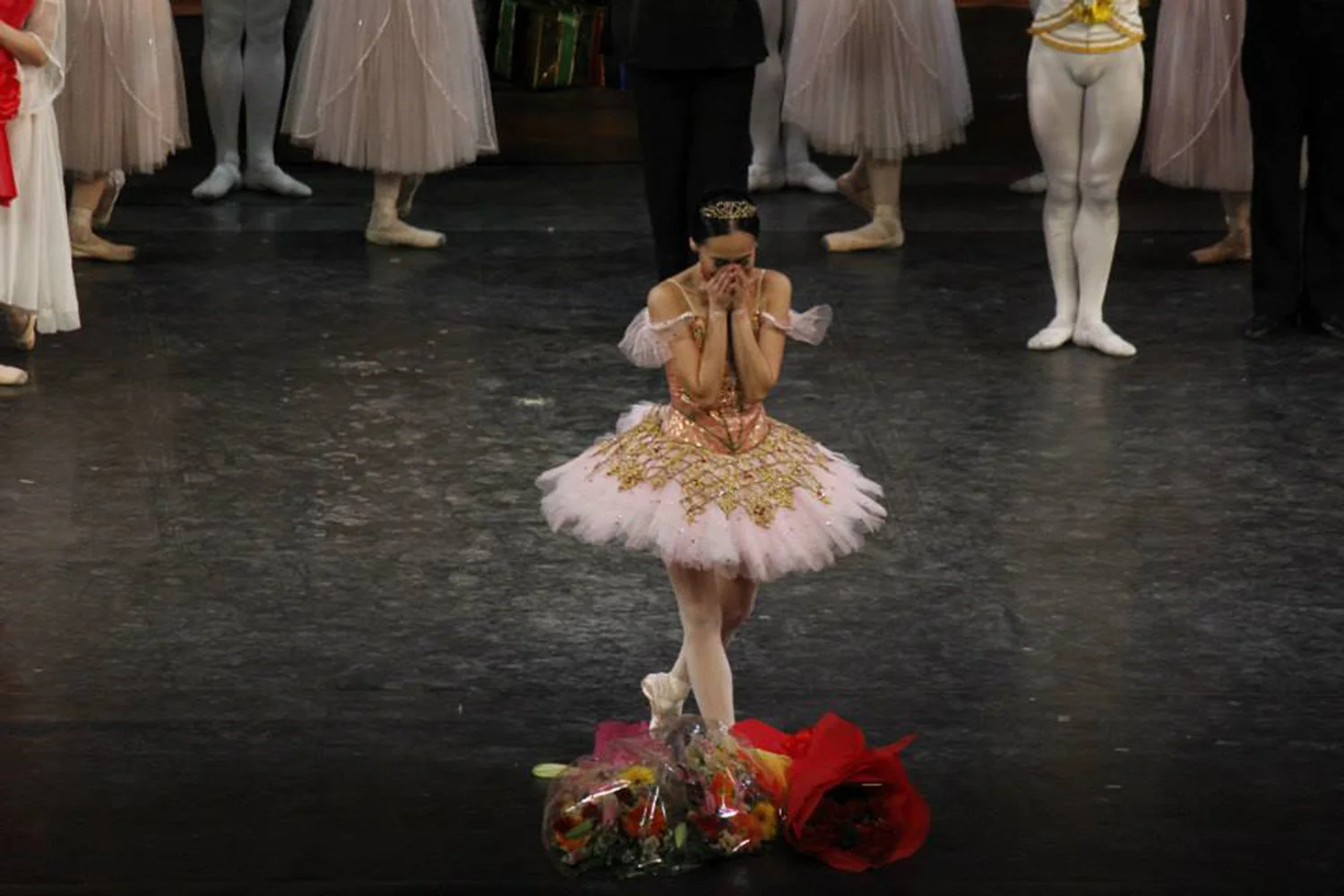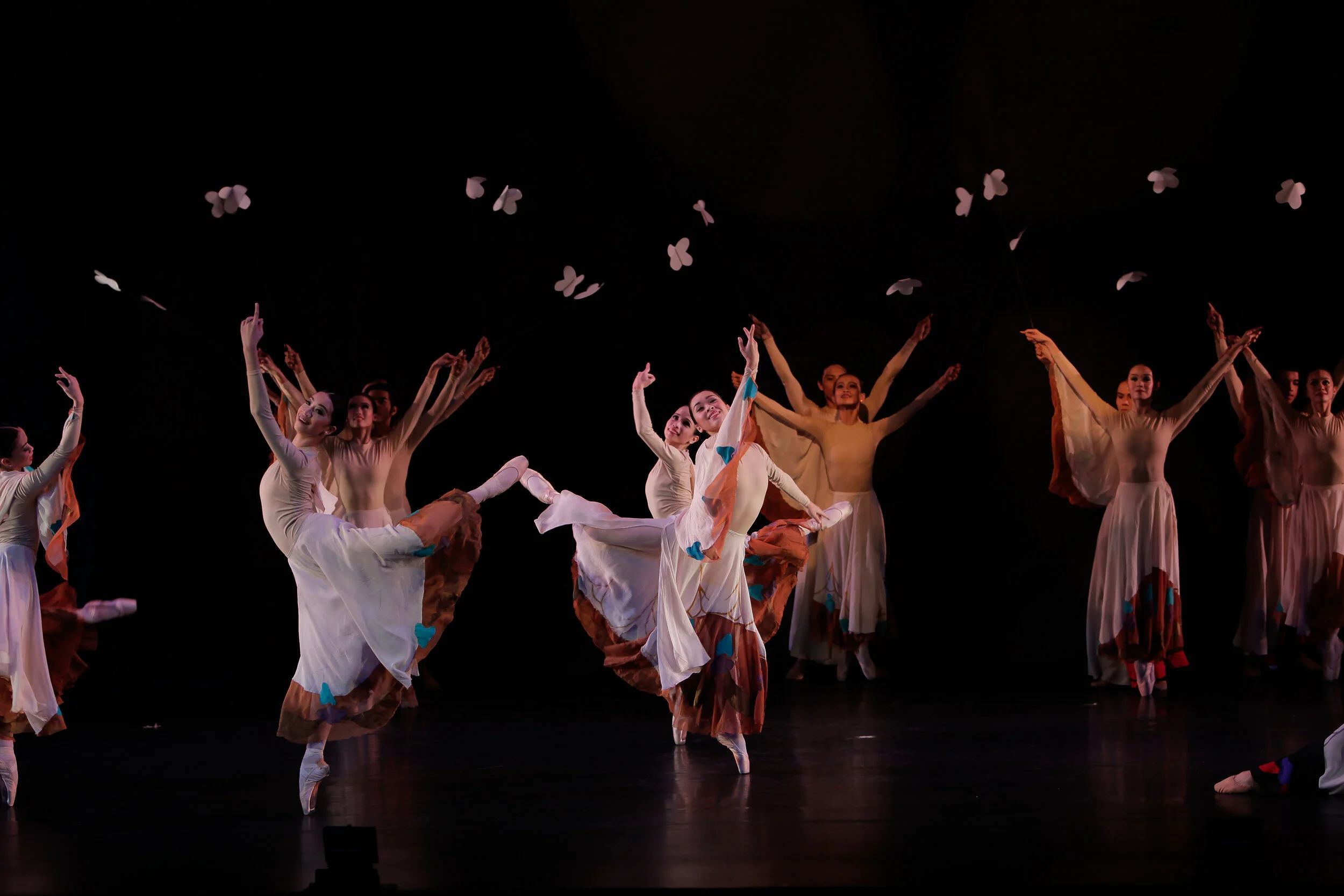25 life lessons I learned from ballet
Beyond the arabesques and grand jetés, ballet is an abundant source of priceless life lessons. With the rigorous training and intense discipline it requires, ballet can teach one how to deal with pressure, disappointments, challenges, and ultimately, success. In 2009, on her 25th anniversary as a professional dancer, prima ballerina and Ballet Manila artistic director Lisa Macuja-Elizalde wrote down 25 key lessons she learned from ballet which she felt both dancers and non-dancers can apply in their own lives. The list was published in a national broadsheet and was also printed in the souvenir program of her 25th anniversary show. The lessons were then shared on this website one at a time in a series, accompanied by photographs underscoring each nugget of wisdom. Here, we run the article in full to celebrate the ballerina’s birthday on October 3.
By Lisa Macuja-Elizalde
1. Perseverance counts! You do not become a ballerina after a three-day workshop or a summer of dance classes. It takes years, usually six to ten years of daily training, in order to be qualified to become a professional.
As a student at the prestigious Leningrad Choreographic Institute in Russia, Lisa soldiered through the difficult ballet classes, homesickness, and culture shock. She graduated in 1984 at the top of her class. Photo from the Ballet Manila Archives
2. No pain, no gain! If you are not ready to sweat with the effort and endure physical, mental and yes, emotional pain, in order to achieve your dreams, you will never achieve them. No achievement just falls on your lap (unless you win the lottery). You have to be ready for some hard, back-breaking work.
It was the first day of Ballet Manila's Christmas break in 2013 but Lisa was seen sweating it out at the barre with her regular routine. Photo by Jimmy Villanueva
3. Talent matters, but it’s not enough. Teachers count! Ballet is a handed down art form from one generation to the next. Even if you are born with the most beautiful and malleable body for ballet, you need a good teacher and mentor to train you to dance well. Ballet skills, just like the “three R’s” (reading, writing and ‘rithmetic) are skills you learn in school
Tatiana Udalenkova spent countless hours personally mentoring Lisa – perfecting her technique until the movement flowed from her core and became second nature. Photo from the Ballet Manila Archives
4. Family support is essential! Had I not had the full support of my family – most especially my parents Cesar and Susan Macuja – I would never have achieved my dream. Every dreamer needs a cheering squad and your family is the best cheering squad around
Basking in the company of her parents, Cesar and Susan Macuja, and mentors Sergei Vikulov and Tatiana Udalenkova, Lisa enjoyed a strong support system that allowed her to power through the many challenges of learning ballet in Russia. Photo from the Ballet Manila Archives
5. Health is wealth! You have to take care of your body. You only have one and each part is irreplaceable. My body is my instrument – I have to fine-tune it daily with proper nutrition, enough sleep and no other illegal or abusive substance such as nicotine or alcohol – or else, I won’t be able to dance.
In an article that came out in the Philippine Daily Inquirer in 2011, Lisa talked about finding that balance to stay strong, fit, and healthy. Clipping from the Ballet Manila Archives
6. Good preparation is the key to a successful plan. Several hours before a ballet performance, you will find me onstage, warming up, giving enough time for mental and physical preparation for the show. Most often, the success of any endeavor is in the planning and preparation.
An already made up Lisa warms up in the kitchen corridors with the chefs, waiters, busboys and other staff running around shortly before a performance for the Arts Council of Cebu Foundation’s 50th anniversary in 2010. Photo by Jimmy Villanueva
7. You have to be ready for anything and think on your toes! No matter how meticulously planned a choreography is, during a live performance, anything can happen. My dancing has trained me to make split-second decisions in front of an audience as the unexpected can definitely sometimes happen.
A 1989 cover story of The Sunday Times Magazine, featured the young Lisa overcoming obstacles on and off the stage through hard work, perseverance, and quick thinking on her toes. Clipping from the Ballet Manila Archives
8. Better to fall than to dance badly. Vaganova would tell this to her students. It’s so much better to fall (since falling is usually an accident) than to not fall at all but dance badly. In other words, a mediocre job with no mistakes is worse than a high-quality performance with one or two falters.
Dancing as a Snowflake in The Nutcracker production of the Leningrad Choreographic School, Lisa’s hair was caught in the backdrop, driving her to tears. Two years later, in 1984, Lisa redeemed herself when she debuted as Masha in the same ballet (above). Photo from the Ballet Manila Archives
9. Falling down is part of dancing, part of living! I can’t remember how many times I have fallen down onstage in front of hundreds of people. But, you just have to learn how to fall gracefully, then pick yourself up, and rally through the rest of the show!
In 1984, Lisa slipped while performing Harlequinade with Bhakytgan Smagulov at the Kirov Theater. Backstage, a devastated Lisa found herself unexpectedly comforted by the legendary Natalia Dudinskaya who told her it was more acceptable for a ballerina to fall while dancing beautifully than never to fall but dance terribly. Photo from the Ballet Manila Archives
10. If you build it, they will come… I know. This is from the Field of Dreams movie. But having been given the Star and Aliw Theaters to dance in on a regular basis, and having danced on a makeshift stage made out of softdrinks cases nailed together – if you build it (a stage), they (the audience) will come.
With a mission to bring ballet to the people, Lisa has led Ballet Manila in performing the classics numerous times in an unlikely venue – the basketball court. Photo from the Ballet Manila Archives
11. Coordination is so important! Dancing is teamwork and coordination. You cannot dance without coordination of every part of your body – just as you cannot accomplish much if your team doesn’t have coordinated efforts.
Dancing as Odette in Swan Lake, Lisa knows the importance of teamwork to achieve those magical moments particularly when the corps de ballet moves as one. Photo from the Ballet Manila Archives
12. A true partnership is built on trust. I’ve danced with countless of premier danseurs in the last 25 years and I needed to trust all of them explicitly. Juliet needs a Romeo; Odette/ Odile a Prince Siegfried; Carmen cannot be Carmen without a Don Jose – that’s just the way the ballet works!
Co-artistic directors Lisa Macuja-Elizalde and Osias Barroso have been true partners in dance – both on stage and off – for over 30 years. Photo by G-nie Arambulo
13. Take risks! Whether it’s as simple as an overhead lift with an unreliable partner or a role that everyone said you should never dance – it’s important to take risks in order to determine what you can and cannot do. Otherwise, the question will remain unanswered all your life!
In 1995, Lisa and dancing partner Osias Barroso led ten other dancers in forming Ballet Manila. Despite the uncertainty, the company immediately gained a following and even went on a Russian tour on their first year. Photo from the Ballet Manila Archives
14. Pray and have faith! In the wings just before I enter onstage, I say a prayer and I know that God is there. He is watching, guiding, helping all the time. I am never alone.
Lisa leads the company in prayer just before the performance of Martin Lawrance’s Rebel in 2016. Photo by Ian Delos Santos
15. If the long-term goal seems too far away, break it down into smaller goals! Yes, Life’s journey is like a ballet choreography – it’s always made of individual steps – that should be taken one at a time.
To prepare for her first Kitri in 1986, Lisa had to learn the various aspects of the choreography. Here, she focuses on the correct use of the fan under the watchful eye of Gabriella Komleva, a Merited Artist of Russia. Photo from the Ballet Manila Archives
16. Learn to listen – to the music, to your body, to your teachers, to your partners and yes, to your critics. When you learn how to listen, you learn how to improve. Feedback from someone watching you can only be constructive because you can never really see yourself from a distance.
Just as Gabriela Komleva had mentored her, Lisa as artistic director passed on her knowledge to soloist Jasmine Pia Dames in 2017 for the latter’s debut as Kitri in Don Quixote. Photo by Jimmy Villanueva
17. Timing is crucial! You just have to dance to the music and keep to the beat! When your movement is misaligned with the music, it’s not dancing anymore – because in dance, the movement and the music have precise positions together.
As Kitri and Basilio, Lisa and partner Osias Barroso moved as one and with perfect timing – executing crucial movements in sync with the beat of the music. Video clip from Ballet Manila Archives collection
18. Smile! Laugh! Have a sense of humor. Dancing has to look effortless. Most often, I smile in order to mask the effort. But it’s important to be able to smile – onstage or off – because yes, it’s a proper disguise to the effort and can be very convincing to you and everyone else.
Despite enduring arduous rehearsals for her 20th anniversary concert, Lisa@20, Lisa still finds the energy for a generous smile while listening to final instructions from co-artistic director Osias Barroso before finally calling it a night. Photo from the Ballet Manila Archives
19. You need to learn when, and how, to stop. One word I often hear during rehearsal is “Stop”. And you have to stop moving in order to analyze and correct what you are doing wrong.
During the rehearsals of The Legends and the Classics, Lisa and co-headliners Lea Salonga and Cecile Licad take a moment to confer with director Roxanne Lapus. Photo by Gerardo Francisco Jr.
20. Accept the fact that nothing and nobody is perfect. As a ballerina, I have always strived for perfection of every movement I do onstage. But, not a single performance of my professional dancing career has been perfect. Perfection is a goal that can never be achieved – but we have to try. No, practice does not make perfect.
Dancing her last Aurora opposite Mikhail Martinyuk in 2014, Lisa still found herself discovering new things about the character and the choreography that added more layers to her performance. Photo by Ocs Alvarez
21. Practice by repetition. It really helps! You remember how you had to memorize that 8 times 8 is 64? Well, repeating a movement again and again makes your muscles memorize how it’s supposed to be done. So, if you still can’t do it, what do you do? Repeat.
Decades of performing the lead in Giselle enabled Lisa to dance it from muscle memory. She appears to float as she performs her last Giselle in 2012 as part of her Swan Song Series. Photo by Jojo Mamangun
22. Discipline matters. No matter how long the standing ovation was the night before, a ballerina’s day begins with ballet class – exercises that you do your whole life. Maintaining your form means working daily on the basics. No room for complacency. You stop, you lose it.
Discipline continues to be among the core values that Lisa instills in her students, whether they choose to pursue a career in dance or not. Photo by Icet Barroso
23. Keep your cool. Loss of control of your emotions can make you make drastic mistakes onstage or off. No matter what happens, keep yourself level-headed and avoid making rash emotional decisions.
With a dancing career that spanned over thirty years, Lisa has experienced it all. Through the many challenges, she dealt with everything as gracefully and as rationally as possible. Photo by Ocs Alvarez
24. You cannot teach everything. As a ballet teacher and a mother, there are simply things that your child or student has to learn on their own.
Lisa ensures that her students have a strong foundation but encourages them to experience life outside class to the fullest as well. Photo by Jimmy Villanueva
25. Be grateful! Every day is a blessing. Every performance I do now after 25 years of dancing is icing on the cake – a miracle that takes place on a daily basis. Thank you! Thank you! Thank you! I am forever grateful.
Lisa considers every moment on stage as a gift to be thankful for. Every bow and every curtain call, as seen in this photo taken after her 1986 debut performance of Giselle in Russia, is an expression of that gratitude. Photo from the Ballet Manila Archives






